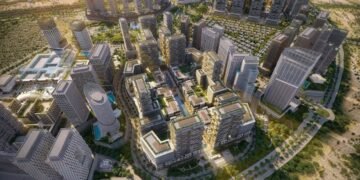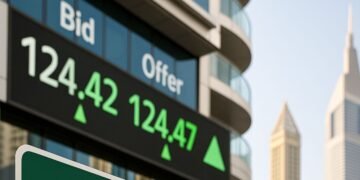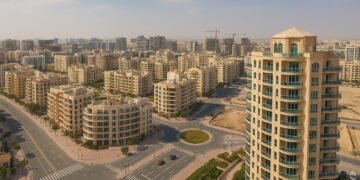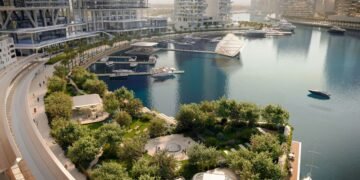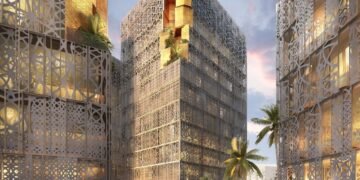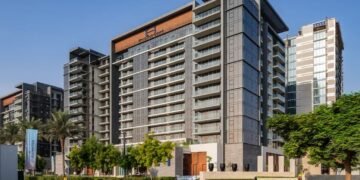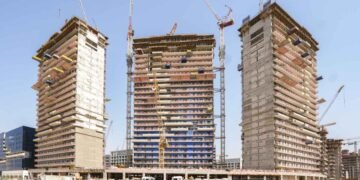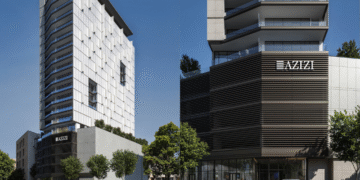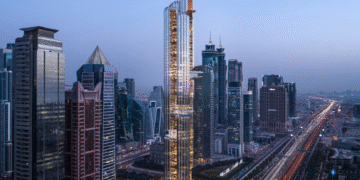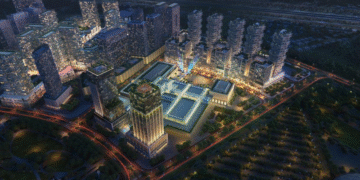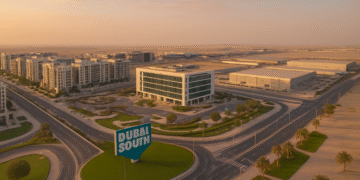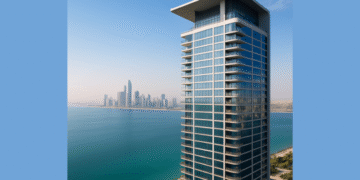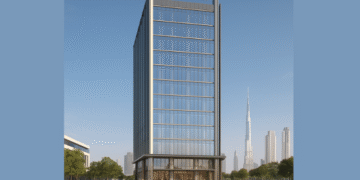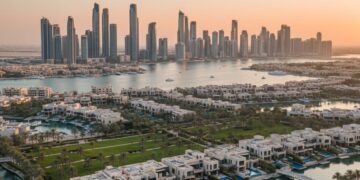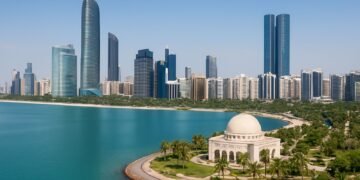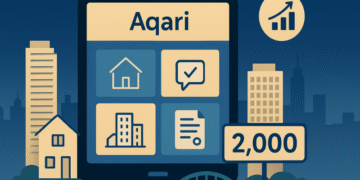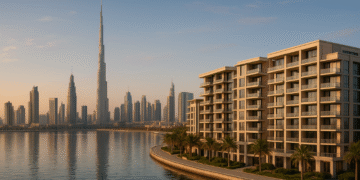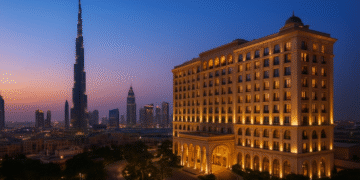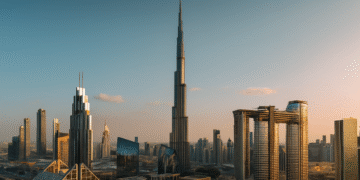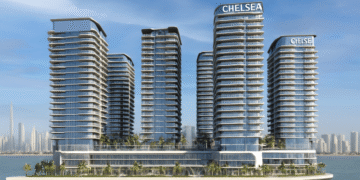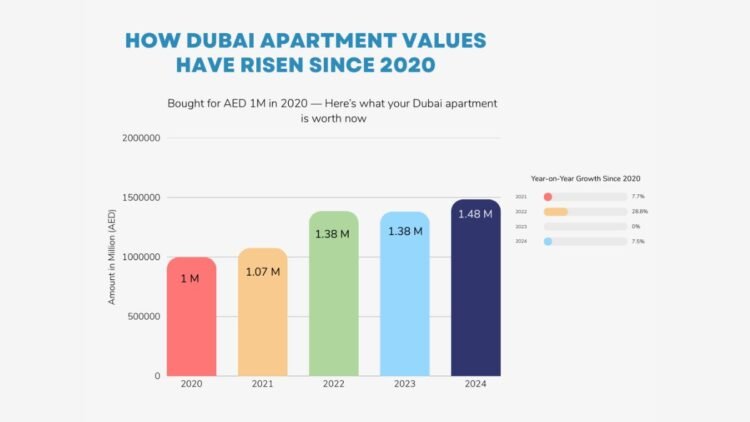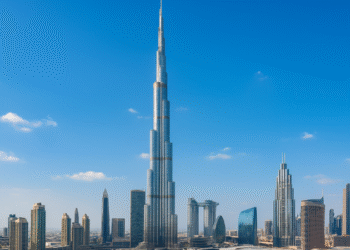Dubai, UAE – Residential real estate values in Dubai have surged by 1.5 times since 2020, underlining the emirate’s position as one of the fastest-growing property markets globally. Apartments bought for AED 1 million in 2020 are now worth around AED 1.5 million, reflecting strong investor demand, limited supply, and Dubai’s rising status as a safe-haven investment hub.
Consistent Price Growth Across Four Years
In 2020, Dubai apartments were priced at around AED 1,101 per square foot. By 2021, the rate had climbed to AED 1,185, before accelerating sharply to AED 1,526 in 2022. Prices moderated slightly in 2023 at AED 1,521 but rebounded again in 2024, hitting AED 1,635 per square foot.
This four-year trend highlights the market’s resilience, especially in comparison to other global property hubs that have struggled with post-pandemic corrections.
Taimur Khan, Head of Research at CBRE Middle East, noted that “demand continues to significantly outstrip supply across both the apartment and villa segments, which is sustaining upward pressure on prices.”
Global Investor Confidence
Dubai’s property market has seen increasing flows of capital from both domestic and international buyers. The emirate’s business-friendly policies, tax advantages, and infrastructure projects have made it a magnet for investors seeking both yield and long-term capital appreciation.
Also read: Omniyat Raises $900 Million in 2025 Sukuk Offerings Amid Strong Investor Demand
According to Faisal Durrani, Partner – Head of Middle East Research at Knight Frank, “Dubai’s residential market continues to defy global trends, with price growth underpinned by international demand and an influx of high-net-worth individuals.”
This influx has been particularly notable among buyers from Europe, Russia, China, and South Asia, further diversifying Dubai’s investor base.
Villas Versus Apartments
While apartments have shown steady appreciation, villa prices have surged even more dramatically. The median price per square foot for villas rose from AED 681 in 2020 to AED 1,344 in 2024 — nearly doubling in just four years. This reflects a post-pandemic preference for larger living spaces, as well as limited availability in prime communities such as Palm Jumeirah, Arabian Ranches, and Dubai Hills.
Opportunities and Risks for Indian Buyers
For overseas investors, Dubai continues to present a compelling case. Among them, Indian buyers stand out as one of the largest and most consistent groups driving real estate demand. According to data from the Dubai Land Department, Indian nationals were among the top three foreign nationalities investing in Dubai property in both 2022 and 2023. The appeal is rooted in several factors: geographical proximity, ease of travel, strong cultural and business ties, and favorable currency dynamics.
For an Indian investor, a Dubai apartment investment 2020 has translated into impressive returns by 2024. The appreciation in value far exceeds the growth rates in most major Indian cities such as Mumbai, Delhi, or Bangalore, where regulatory hurdles and oversupply often cap returns. In contrast, Dubai offers a transparent regulatory environment, secure ownership rights, and attractive rental yields that regularly exceed 6% in prime locations.
In addition, initiatives such as the 10-year Golden Visa for property investors have made Dubai more appealing. For Indian families looking at education and business opportunities, residency advantages amplify the financial rationale behind property investments.
However, experts caution that rising prices also call for careful due diligence. Mortgage costs, ongoing service charges, and potential oversupply in certain off-plan projects should be factored into calculations. While premium neighborhoods such as Downtown Dubai and Dubai Marina continue to attract wealthy Indian investors, mid-market buyers are increasingly looking at emerging areas like Dubai South and Jumeirah Village Circle for affordability and growth potential.
Market analysts also point to currency considerations. With the Indian rupee’s relative weakness against the dirham, property purchases can feel costlier in INR terms today compared to 2020. Yet, this also increases the appeal of rental income denominated in UAE dirhams, which can serve as a hedge against domestic inflation.
For Indians considering whether Dubai remains attractive in 2024, the answer lies in both diversification and timing. Investing in Dubai not only offers exposure to a dollar-linked currency environment but also provides portfolio diversification outside of India’s cyclical property sector. As Knight Frank’s Faisal Durrani noted, the emirate’s growth has been underpinned by high-net-worth individuals and global demand — a trend Indian investors remain firmly a part of.
Outlook for 2025 and Beyond
Market analysts expect Dubai’s real estate sector to maintain steady momentum, though the pace of price appreciation may moderate as new supply enters the market.
CBRE’s latest review forecasts continued demand across both villas and apartments, albeit with signs of price stabilization in some segments. Meanwhile, Knight Frank highlights the government’s initiatives, such as Golden Visas and long-term residency programs, as key drivers that will sustain international interest.
For Indian investors, the long-term fundamentals remain intact. Whether for capital appreciation, rental yields, or residency advantages, Dubai continues to offer a unique investment case compared to regional and global peers.
Discover more from Invest Dubai Today - Dubai Realty Insights
Subscribe to get the latest posts sent to your email.



